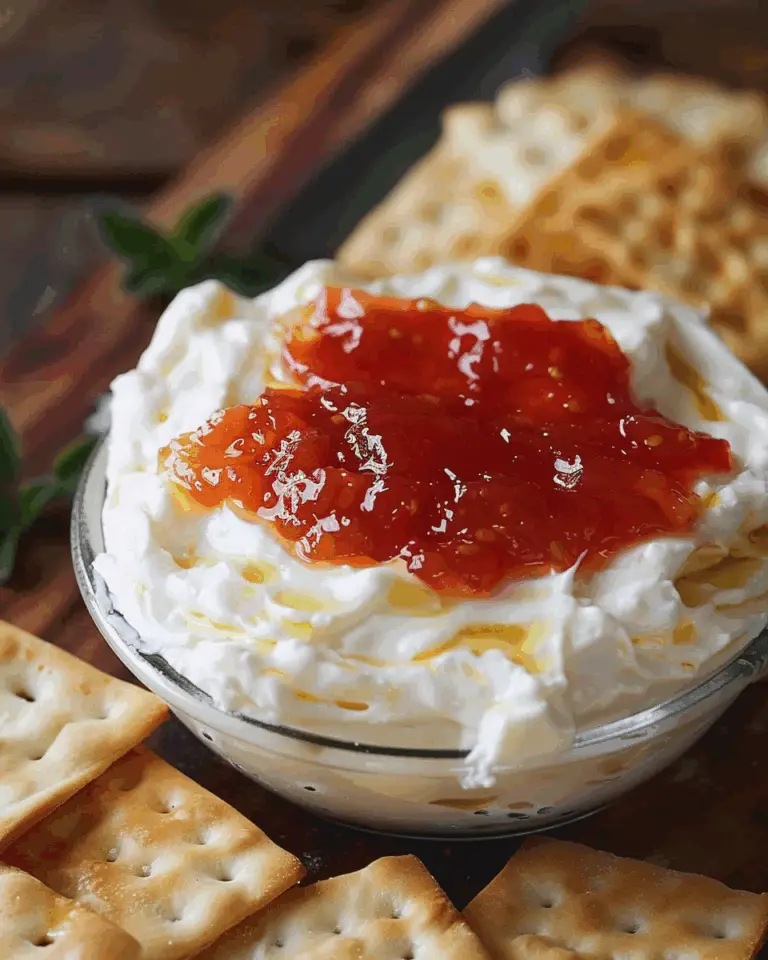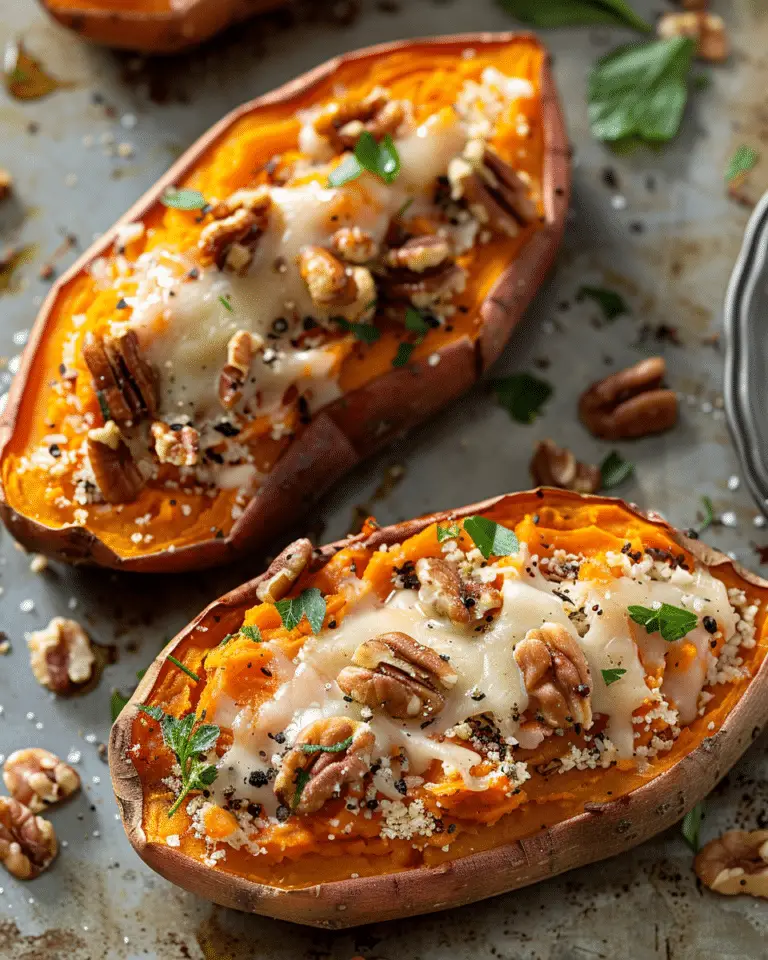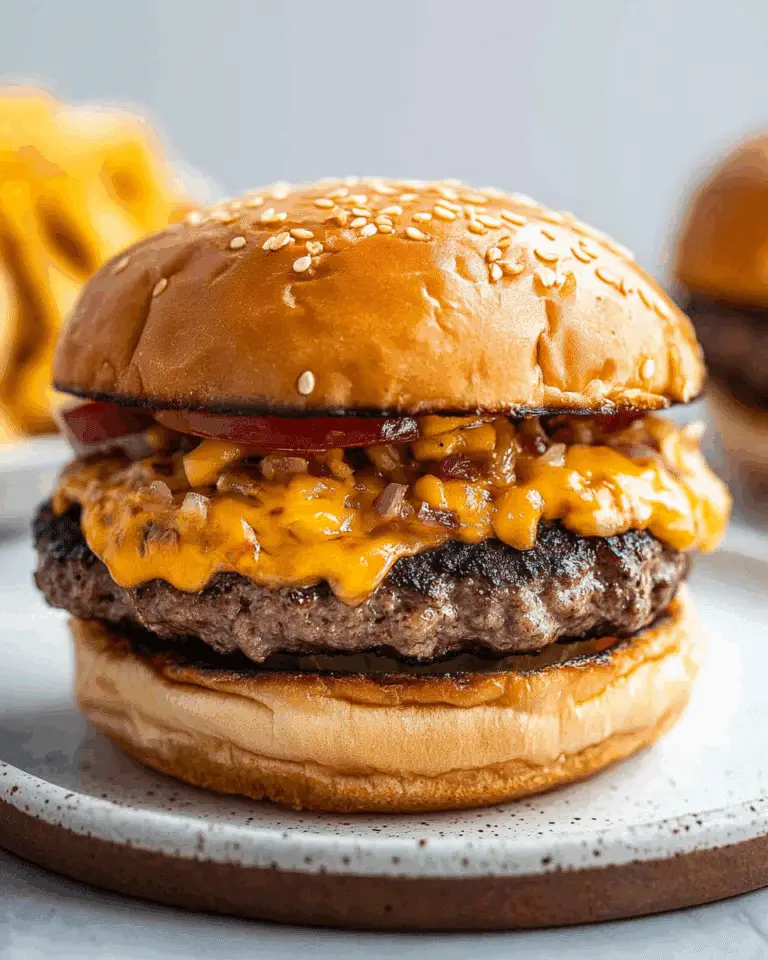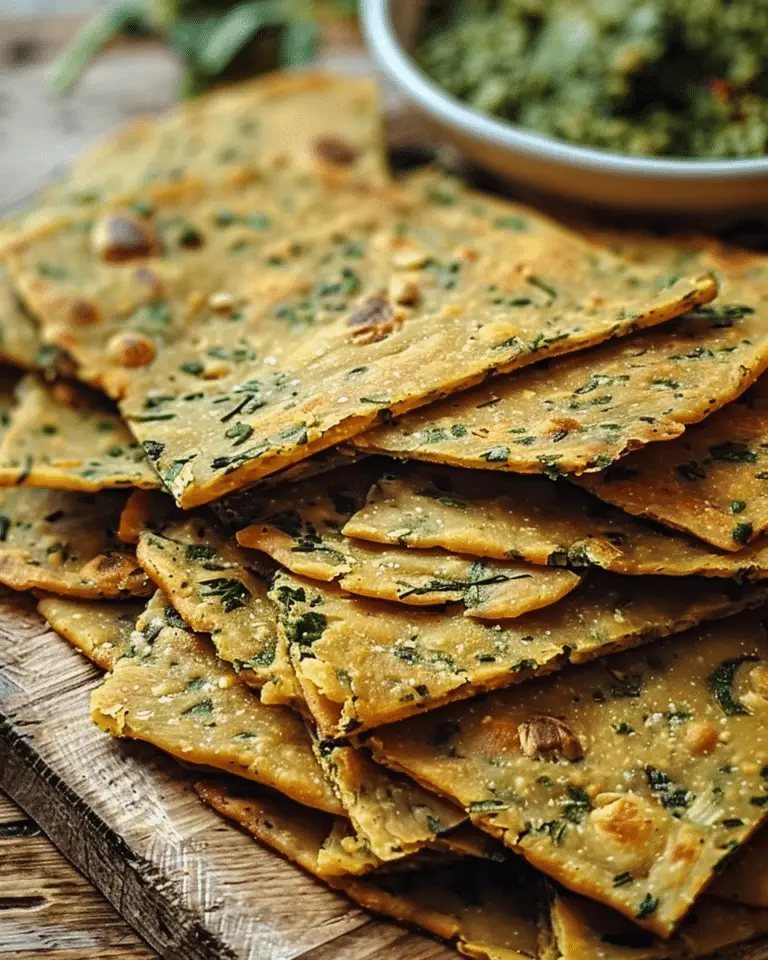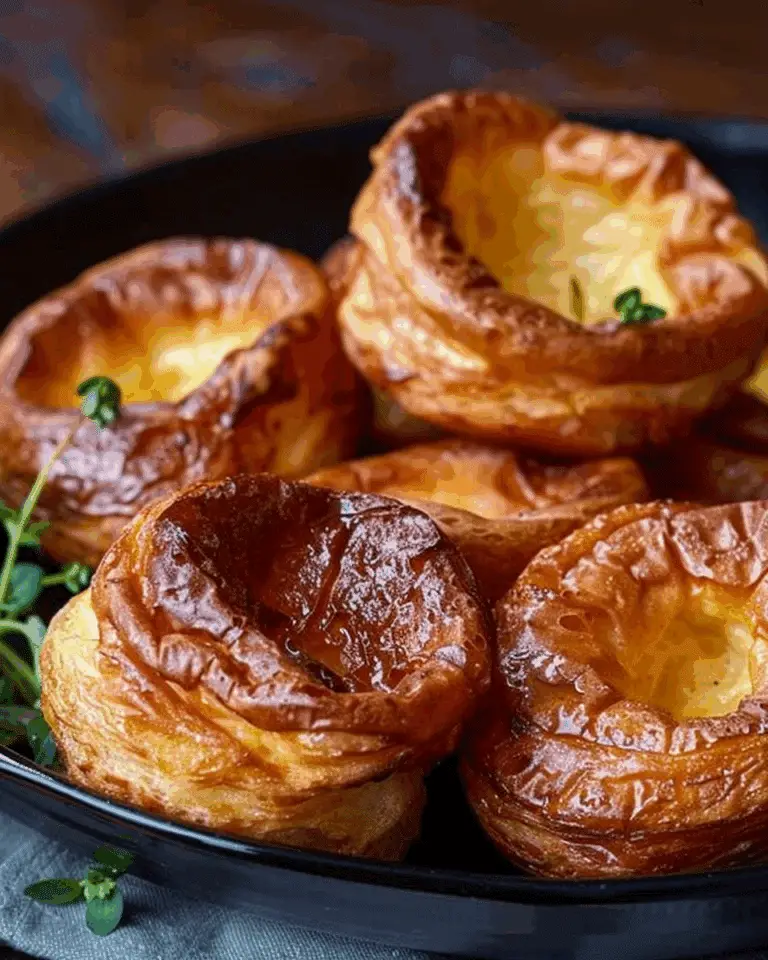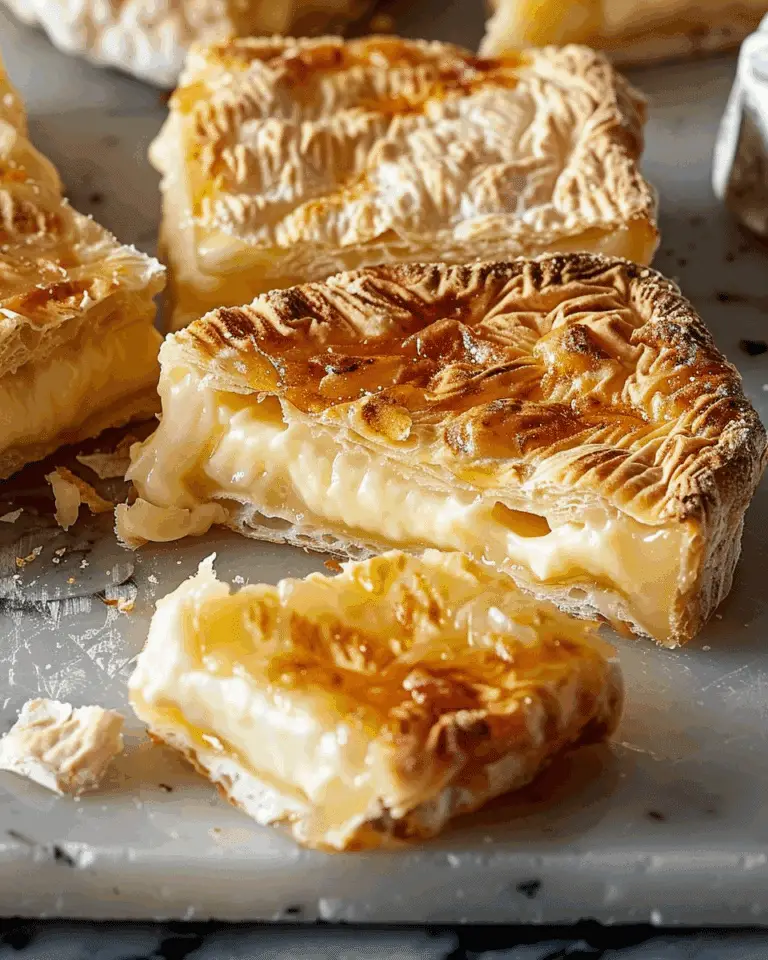
These Billion Dollar Buttery Biscuits are the ultimate comfort food – perfectly flaky, tender, and rich with buttery goodness. This simple recipe creates biscuits with golden-brown tops and soft, pillowy centers that melt in your mouth. Whether served as a side for dinner or as the base for breakfast sandwiches, these biscuits are truly worth their name.
Why You’ll Love This Recipe
- These biscuits take just 25 minutes from start to finish – perfect for busy weeknights
- The double butter approach (cold butter in the dough and melted butter brushed on top) creates unmatched flavor
- Simple ingredients you likely already have in your pantry
- Versatile enough to pair with both sweet and savory dishes
- The biscuits rise beautifully with distinct, flaky layers
- No special equipment needed – just a bowl and your hands
- They’re impressive enough for guests but easy enough for everyday
Ingredients
(Tip: You’ll find the full list of ingredients and measurements in the recipe card below.)
- All-purpose flour forms the foundation of these biscuits, providing structure while still allowing for tenderness when handled properly. For a lighter texture, you can substitute up to half the flour with cake flour.
- Baking powder is the leavening agent that gives these biscuits their impressive rise. Make sure yours is fresh for the best results – baking powder loses its potency over time.
- Sugar might seem small in quantity, but it plays an important role beyond sweetness. It helps with browning and tenderizes the dough slightly. You can adjust this up for sweeter biscuits or down for more savory applications.
- Salt enhances all the flavors in the biscuit and balances the richness. Don’t skip this crucial ingredient, as it makes a noticeable difference in the final taste.
- Cold unsalted butter is perhaps the most critical ingredient for creating those gorgeous flaky layers. The cold butter creates pockets in the dough that, when hit with high heat, create steam and separate the dough into layers. Keeping it cold is essential.
- Buttermilk adds a subtle tanginess while its acidity activates the baking powder for a better rise. The fat content also contributes to tenderness. If you don’t have buttermilk, you can make a quick substitute by adding 1 tablespoon of lemon juice or vinegar to regular milk and letting it sit for 5 minutes.
- Melted butter for brushing creates that irresistible golden-brown finish and adds an extra layer of buttery flavor that makes these biscuits truly special. For variation, you could infuse this butter with herbs or garlic.
Directions
- Preheat oven to 425°F (220°C).
- In a large bowl, whisk together flour, baking powder, sugar, and salt.
- Cut in the cold butter using a pastry blender or your fingers until the mixture resembles coarse crumbs.
- Pour in the cold buttermilk and stir with a fork until just combined—the dough will be sticky.
- Turn the dough out onto a lightly floured surface and gently knead a few times until it comes together.
- Pat or gently roll the dough to about ½ inch thickness.
- Use a biscuit cutter or the rim of a glass to cut out biscuits.
- Place biscuits on an ungreased baking sheet; place touching each other for soft sides or spaced apart for crispy sides.
- Bake for 12–15 minutes or until golden brown.
- Remove from oven and immediately brush tops with melted butter for an extra buttery finish.
Servings and Timing
This recipe makes 8 medium-sized biscuits. Preparation takes about 10 minutes, with an additional 15 minutes of baking time, for a total of 25 minutes from start to finish. Each biscuit contains approximately 180 calories, making them a relatively moderate indulgence.
Variations
- Herb Biscuits: Add 1-2 tablespoons of fresh chopped herbs like rosemary, thyme, or chives to the dry ingredients.
- Cheese Biscuits: Fold in 3/4 cup of shredded cheddar, Gruyère, or Parmesan cheese after cutting in the butter.
- Honey Butter Biscuits: Mix 2 tablespoons of honey into the melted butter before brushing on top of the baked biscuits.
- Garlic Butter Biscuits: Add 1/2 teaspoon of garlic powder to the dry ingredients and mix minced garlic into the melted butter topping.
- Drop Biscuits: For a more rustic approach, skip rolling and cutting the dough. Instead, simply drop spoonfuls of the dough onto the baking sheet.
- Sweet Biscuits: Increase the sugar to 3 tablespoons and add 1 teaspoon of vanilla extract to the buttermilk for a sweeter breakfast treat.
- Storage/Reheating
- Room Temperature: Store completely cooled biscuits in an airtight container for up to 2 days. Layer them with parchment paper to prevent sticking.
- Refrigeration: While possible, refrigeration can dry out biscuits, so it’s generally not recommended unless necessary. If you do refrigerate, wrap tightly and use within 3-4 days.
- Freezing Baked Biscuits: Once completely cooled, place biscuits in a freezer-safe bag or container, separating layers with parchment paper. They’ll keep for up to 3 months. Label with the date for reference.
- Freezing Unbaked Biscuits: Place cut biscuits on a parchment-lined baking sheet and freeze until solid. Transfer to a freezer bag and store for up to 3 months. Bake directly from frozen, adding 3-5 minutes to the baking time.
- Reheating: For the best texture, reheat biscuits in a 350°F oven for 5-7 minutes. You can also microwave them for 15-20 seconds, though the texture won’t be as good. For an extra touch, brush with a little melted butter after reheating.
FAQs
Why are my biscuits not rising as high as they should?
This could be due to a few factors: your baking powder might be old and less effective, the butter might have been too warm and melted into the dough, or you might have overworked the dough which develops gluten and makes biscuits tough rather than fluffy.
Can I use salted butter instead of unsalted?
Yes, you can use salted butter, but reduce or eliminate the added salt in the recipe. Unsalted butter is preferred because it allows you to control the exact amount of salt in your biscuits.
My dough is too sticky to work with. What should I do?
Add a small amount of flour to your work surface and hands, but be careful not to add too much or your biscuits will become dense. Chilling the dough for 15-20 minutes can also help make it more manageable.
Can I make the dough ahead of time?
Yes, you can prepare the dough up to the point of cutting out the biscuits. Place the cut biscuits on a baking sheet, cover with plastic wrap, and refrigerate for up to 24 hours before baking.
What’s the secret to flaky layers in biscuits?
Three main factors create flaky layers: using cold butter that stays in small pieces rather than fully incorporating into the dough, handling the dough minimally to avoid developing gluten, and folding the dough once or twice before cutting to create literal layers.
Can I use a food processor to cut in the butter?
Yes, but use very short pulses and be careful not to over-process. The butter should remain in small, visible pieces about the size of peas for the best texture.
What’s the best way to cut biscuits?
For the highest rise, use a sharp-edged cutter and press straight down without twisting. Twisting seals the edges and can prevent proper rising. If using a glass, make sure the edge is thin and sharp.
How do I know when my biscuits are done baking?
Biscuits should be golden brown on top and firm to the touch. If you’re uncertain, you can carefully lift one to check that the bottom is also golden brown and not doughy.
Can I use milk instead of buttermilk?
While regular milk will work in a pinch, it won’t provide the same tangy flavor or tender texture. The best substitute is adding 1 tablespoon of lemon juice or white vinegar to 3/4 cup of regular milk and letting it sit for 5 minutes.
Why do some recipes recommend placing biscuits close together on the baking sheet?
Placing biscuits so they touch on the baking sheet creates soft sides as they rise and bake against each other. This is called “batch baking” and is traditional in Southern biscuit making. Spacing them apart will give you crispier edges all around.
Conclusion
These Billion Dollar Buttery Biscuits truly live up to their name with their incredible texture, flavor, and versatility. The simple ingredients and straightforward technique make them approachable for bakers of all skill levels, while the results are impressive enough to serve at any occasion.
The key to success lies in keeping your ingredients cold and handling the dough with a gentle touch. Master these fundamentals, and you’ll be rewarded with tall, flaky, buttery biscuits that will have everyone asking for seconds.
Whether you serve them alongside a hearty stew, split them for breakfast sandwiches, or simply enjoy them warm with honey or jam, these biscuits are sure to become a staple in your recipe collection. Their billion-dollar taste comes with a much more modest investment of time and ingredients – making them truly priceless.
Print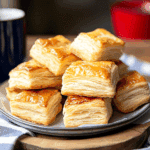
Billion Dollar Buttery Biscuits
- Total Time: 25 minutes
- Yield: 8 biscuits
- Diet: Vegetarian
Description
Billion Dollar Buttery Biscuits are soft, flaky, and irresistibly buttery, perfect for breakfast or as a side dish.
Ingredients
- 2 cups all-purpose flour
- 1 tablespoon baking powder
- 1 teaspoon sugar
- ½ teaspoon salt
- ½ cup (1 stick) cold unsalted butter, cut into small cubes
- ¾ cup cold buttermilk
- ¼ cup unsalted butter, melted
Instructions
- Preheat oven to 425°F (220°C).
- In a large bowl, whisk together flour, baking powder, sugar, and salt.
- Cut in the cold butter using a pastry blender or your fingers until the mixture resembles coarse crumbs.
- Pour in the cold buttermilk and stir with a fork until just combined—the dough will be sticky.
- Turn the dough out onto a lightly floured surface and gently knead a few times until it comes together.
- Pat or gently roll the dough to about ½ inch thickness.
- Use a biscuit cutter or the rim of a glass to cut out biscuits.
- Place biscuits on an ungreased baking sheet; place touching each other for soft sides or spaced apart for crispy sides.
- Bake for 12–15 minutes or until golden brown.
- Remove from oven and immediately brush tops with melted butter for an extra buttery finish.
Notes
- Ensure that the butter and buttermilk are cold for the best texture.
- Do not overmix the dough; it should be just combined.
- For variation, add shredded cheese or herbs to the dough before baking.
- Prep Time: 10 minutes
- Cook Time: 15 minutes
- Category: Breakfast, Side Dish
- Method: Baking
- Cuisine: American
Nutrition
- Serving Size: 1 biscuit
- Calories: 180
- Sugar: 1g
- Sodium: 200mg
- Fat: 10g
- Saturated Fat: 6g
- Unsaturated Fat: 3g
- Trans Fat: 0g
- Carbohydrates: 20g
- Fiber: 1g
- Protein: 3g
- Cholesterol: 25mg

